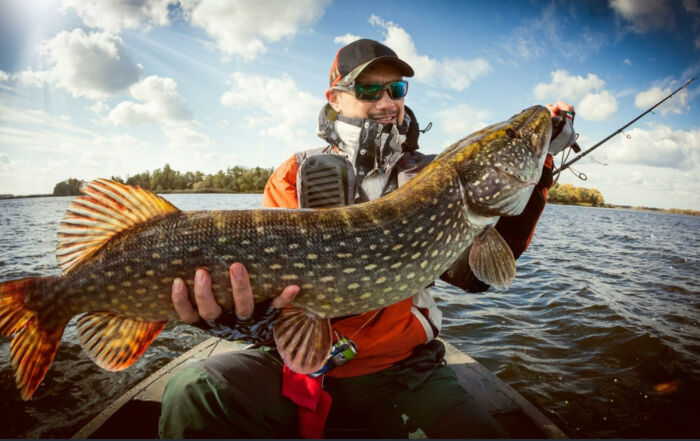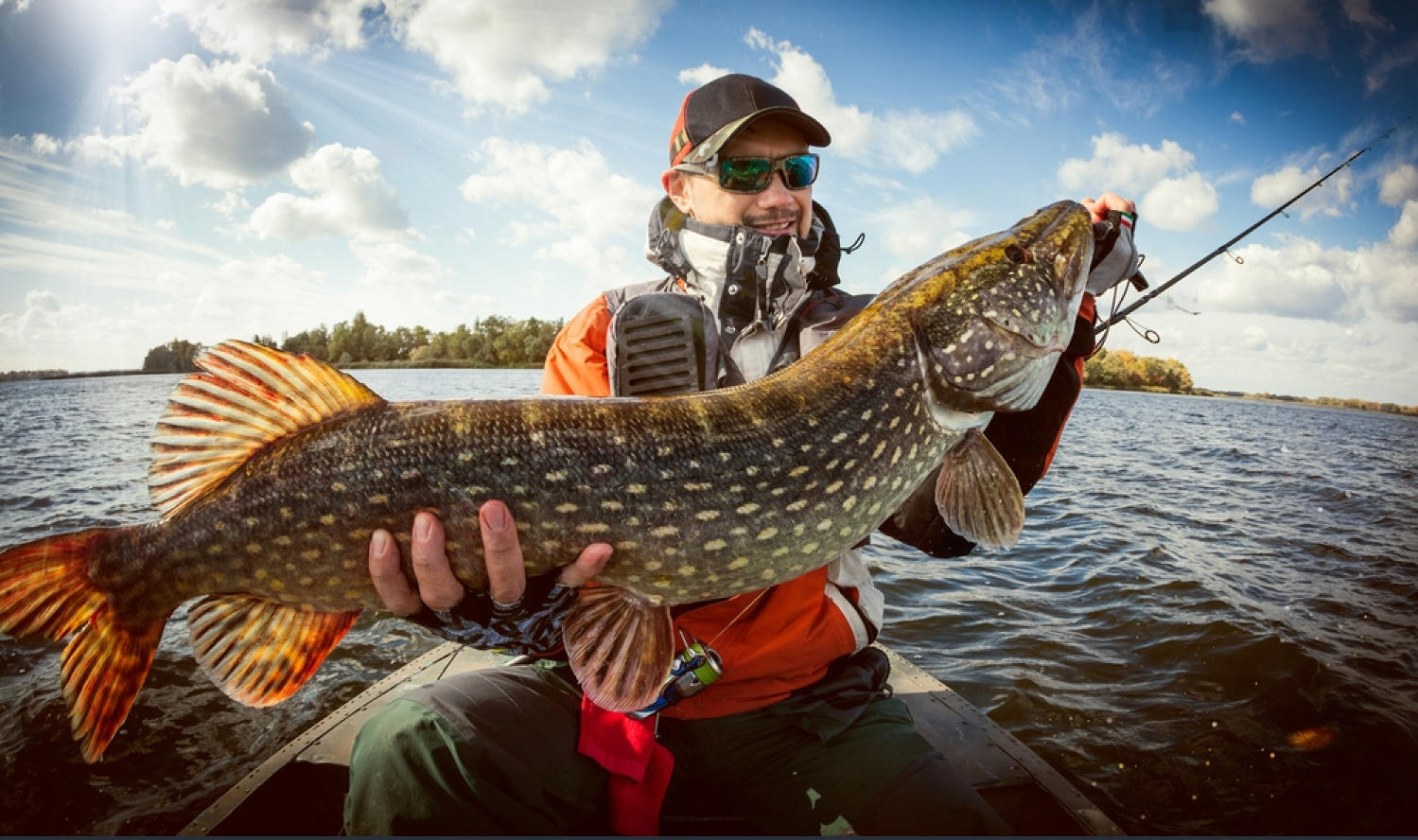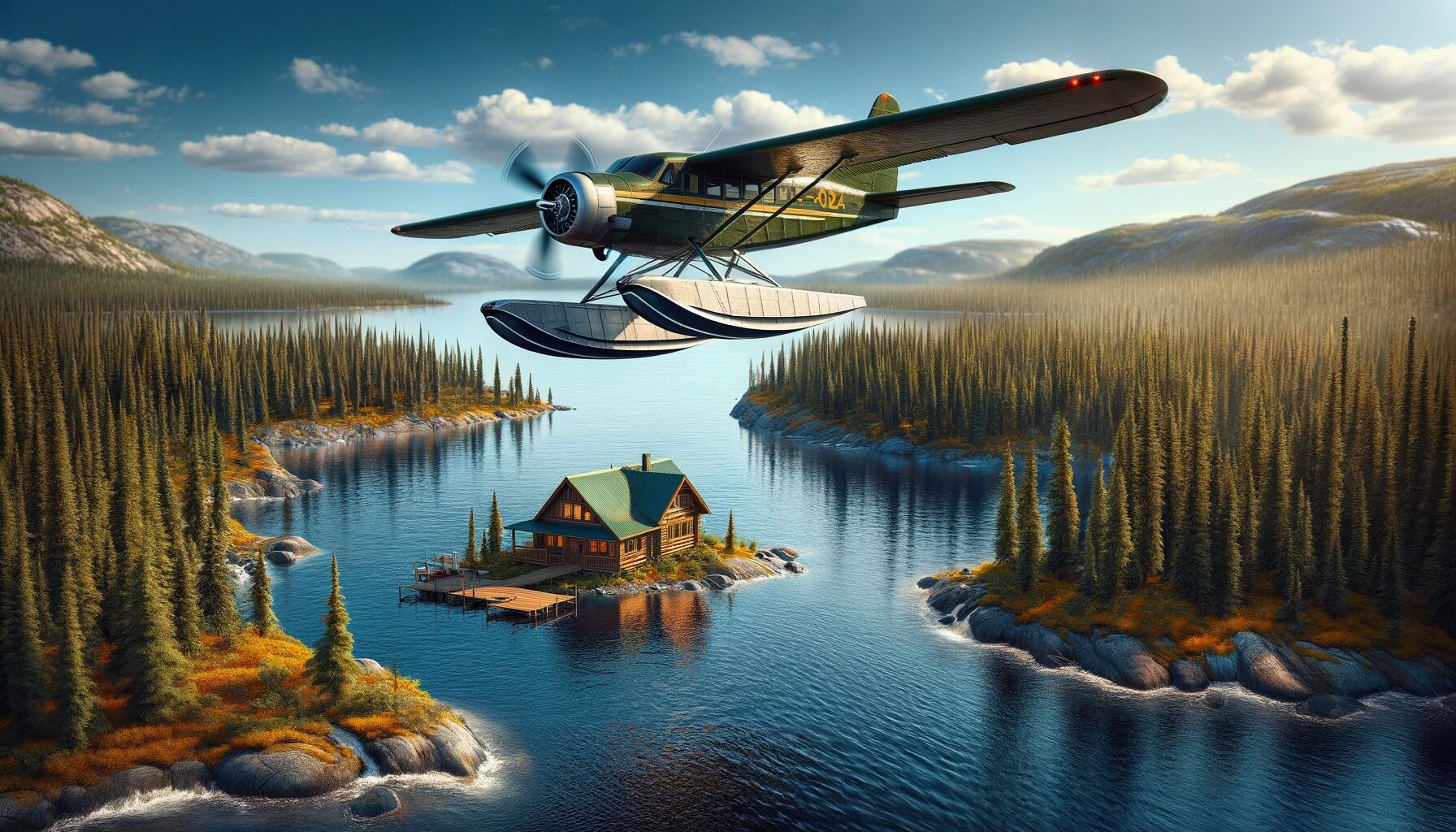Fishing, for many of us, is more than just a sport; it’s a dance with nature, a timeless tradition passed down through generations. From the days of simple bamboo poles and hand-tied flies, sport fishing has come a long way. As the world evolved, so did our fishing techniques and tools. The hum of a reel, the feel of a rod, and the thrill of the catch remain, but technology has woven its way into this age-old pastime.
The modern angler’s tackle box has seen a tech makeover. GPS devices guide us to hidden fishing spots, sonar tech reveals the underwater world, and apps predict the best fishing times. But as we stand on the shores of the future, there’s a new player casting its line into the waters of sport fishing: Artificial Intelligence. AI, with its vast capabilities, promises to revolutionize our fishing experiences. Still, it also raises a question: How do we balance the cherished fishing traditions with the unstoppable tide of technology? Let’s dive in and explore.
AI-Powered Fish Finders and Sonars: A New Wave in Sport Fishing
Back in the day, we relied on local knowledge, intuition, and a bit of luck to find the best fishing spots. We’d share tales of that secret spot where the fish always bit, passed down from one generation of anglers to the next. But times are changing, and while I cherish those memories and the wisdom of old, I can’t help but be intrigued by the advancements in fishing technology.
Enter AI-powered fish finders and sonars. These aren’t your granddad’s fish finders; they blend tradition and futuristic tech. By interpreting underwater data, AI can pinpoint fish with an accuracy that was once thought impossible. Instead of just showing blobs or blips on a screen, modern fish finders can differentiate between species sizes and even suggest what kind of bait might work best. It’s like having a seasoned fisherman with years of experience right inside that little device.
But why the fuss about AI in fish finders? Well, for starters, they increase our chances of a successful catch. No more spending hours in a spot with no action. With AI-driven accuracy, we can be more efficient, ensuring we’re casting our lines where the fish genuinely are.
Let’s talk about some real-world examples. Brands like Lowrance, Hummingbird, and Garmin have rolled out fish finders that use AI algorithms to give anglers an edge. The Garmin Panoptix LiveScope, for instance, offers real-time scanning sonar, giving you a live image of what’s swimming below. It’s almost like watching a high-definition TV show where the fish are the stars.
However, as much as I appreciate the convenience and edge these devices offer, I often find myself torn. There’s an undeniable charm in the unpredictability of fishing, the dance of man versus nature. With AI entering the scene, are we losing that raw, authentic experience? Or are we simply evolving, merging the age-old tradition of sport fishing with the boundless possibilities of technology?
In the end, whether you’re a purist or a tech enthusiast, one thing’s for sure: AI-powered fish finders are making waves in the angling world, and they’re here to stay. But as we embrace this new era, let’s not forget the roots, the stories, and the passion that makes fishing more than just a sport—it’s a way of life.
Predicting Prime Fishing Spots
The age-old quest of every angler: finding that elusive, perfect fishing spot. Back in the day, it was all about intuition, local folklore, and a bit of luck. We’d look to the skies, feel the wind’s direction, and maybe even rely on some passed-down family wisdom. But times, they are a-changin’.
Enter the world of AI, a game-changer in predicting where those finned beauties might be hiding. By gobbling up vast amounts of environmental data, AI can give insights into fish movement like never before. It’s not just about knowing where the fish are but understanding why they’re there. Factors like water temperature, salinity, and food sources play a huge role, and AI is on it.
Weather patterns, tides, and even lunar phases (yep, the moon’s pull does more than create tides) can significantly influence fish behavior. Traditionalists might scoff, but there’s no denying the results when AI algorithms process this data to pinpoint optimal fishing times. It’s like having a seasoned old-timer, a marine biologist, and a supercomputer all rolled into your pocket.
And for those of us who might not be tech-savvy? Fear not. There are many user-friendly apps and tools out there designed for everyday anglers. These AI-driven tools offer predictions, advice, and sometimes even a bit of fishy wisdom. So, the next time someone asks about your secret spot, wink and say it’s a bit of the old and new. Because with AI by our side, every fishing tale has the potential to be a big one.
Innovative Fishing Gear: When Tradition Meets Tomorrow
Ah, the trusty fishing rod. It’s been by our side for centuries, a steadfast companion on countless fishing trips. But as with all things, evolution is inevitable. Enter the world of AI-enhanced fishing gear, where the age-old tradition of angling meets the cutting-edge advancements of the 21st century.
Imagine casting your line and having real-time feedback on the depth, water temperature, and even the type of fish nibbling at your bait. It sounds like something out of a sci-fi movie, right? But it’s not. Modern fishing rods and reels now have sensors that can provide all this information. These sensors, powered by AI, analyze the underwater environment and give anglers insights previously left to intuition or sheer luck.
But why the need for such high-tech gear? Well, for starters, it levels up the precision game. No more guessing or relying solely on experience. With AI-driven gear, you get data-driven insights that can significantly increase your chances of making a catch. For instance, the rod can suggest adjustments to your casting technique or even recommend a different bait based on the fish’s behavior.
Moreover, for those new to the sport, these innovative tools can be a fantastic learning aid. They bridge the gap between novice and expert, offering guidance that typically takes years to acquire.
Now, if you’re wondering about the kind of gear that’s out there, there are several noteworthy products making waves (pun intended) in the market. Brands Anglr are pioneering the integration of AI into fishing equipment, offering tools that not only enhance the fishing experience but also respect the art of angling.
AI in Fish Identification: More Than Just a Fancy Tool
Back in the day, identifying a fish meant flipping through a worn-out field guide or asking the old-timers at the dock. But, as with many things, technology has stepped in, and the process has gotten much more intelligent. Enter AI-powered fish identification apps. Just snap a photo, and voila! The species, its common name, size, and fun facts pop up on your screen. But is it just a fancy tool, or does it have more profound implications?
For sport fishing enthusiasts, accurate fish identification isn’t just about bragging rights; it’s about conservation. Knowing precisely what you’ve caught ensures you follow local regulations, which vary by species. This is especially crucial in areas with endangered or protected species. Catching a rare fish is thrilling, but knowing when to release it? That’s responsible angling.
Moreover, these AI-driven apps are pivotal in enhancing catch-and-release practices. With instant data at their fingertips, anglers can quickly determine if a fish should be kept or released, ensuring the fish population remains healthy and vibrant for future generations. It’s a blend of tradition and technology, where respect for nature meets the power of AI. And for many of us, it’s a game-changer.
Drones and AI in Sport Fishing: A New Horizon
Using a flying machine to aid in sport fishing would’ve been dismissed as pure fantasy. But here we are in an era where drones are not just for stunning aerial photography but have found a place in the angler’s toolkit.
Drones, especially AI-powered, have revolutionized sport fishing in ways we hadn’t imagined. For starters, they provide an eagle-eye view of vast water expanses, allowing fishermen to scout and pinpoint fish schools or individual game fish. This aerial perspective is invaluable, especially in vast open waters where traditional methods might fall short.
But it’s not just about spotting; some innovative anglers use drones to drop bait in precise locations, especially when casting a line won’t do the trick. Imagine seeing a school of tuna or a lurking marlin from your drone’s camera and then, with the push of a button, dropping bait right amidst the action. It’s precision fishing taken to a whole new level.
However, as with all technologies, there are challenges. Drones can be noisy, and there’s always a risk of scaring away the fish. Battery life, especially in windy conditions, can be a limiting factor. And let’s not forget the learning curve associated with piloting these gadgets.
Yet, the benefits, for many, outweigh the challenges. Drones, coupled with AI, can analyze water temperatures, detect fish movements, and predict where the fish might be headed. It’s like having a bird’s eye combined with the brain of a seasoned fisherman.
Incorporating drones into sport fishing might ruffle the feathers of purists who believe in the traditional rod and reel. But as an angler who respects the past and is excited about the future, I see drones and AI as tools that, when used responsibly, can enhance our fishing experience while ensuring we remain stewards of the water and its inhabitants.
Experience the perfect blend of AI innovation and the thrill of the catch! Book your next fishing adventure and make unforgettable memories on the water. Don’t wait, cast your reservation today!
Personalized AI Coaching for Anglers
The age-old tradition of passing down fishing techniques from one generation to the next. I remember the days when learning the ropes of angling meant spending countless hours with seasoned fishermen, absorbing every tidbit of wisdom they had to offer. But times, they are a-changin’. With the dawn of AI, we’re seeing a new kind of mentor emerge: the virtual fishing coach.
Imagine casting your line, and a device in your pocket gives you real-time feedback on your technique. That’s the magic of AI-driven platforms today. They can analyze the way you cast, reel, and even the way you hold your rod, offering pointers to perfect your art. It’s like having a seasoned angler with you but in digital form.
But it’s not all rosy. There’s something to be said about the human touch, the stories shared on a quiet boat, the camaraderie. Can an AI replace the bond between a mentor and a student? While these platforms offer incredible insights, I believe there’s still a place for old-fashioned learning. After all, sport fishing isn’t just about the catch; it’s about the experience.
Yet, for those who might not have access to a mentor or are looking to refine specific techniques, AI-driven coaching can be a game-changer. As with everything, it’s about finding the balance and embracing the new while respecting the old. That’s the way of the angler.
Ethical Considerations and Fair Play
As a fisherman who’s felt the thrill of the tug on a line and the satisfaction of outsmarting a wily fish, I can’t help but wonder: where do we draw the line with technology? Sport fishing has always been about the connection between the angler and nature, the dance of wit and skill. But with AI creeping into our tackleboxes, are we losing that essence?
Fishing tournaments have always been a testament to an angler’s skill. But what happens when AI-assisted tools come into play? Is it still a level playing field? Some argue that using AI in tournaments is akin to having an unfair advantage, while others believe it’s just the next step in the sport’s evolution. It’s a tricky balance, for sure.
We can’t deny the benefits of technology. Heck, even our granddads probably had a thing or two to say about the first fish finders. But as we embrace these advancements, it’s crucial to remember the spirit of sport fishing. It’s not just about the catch; it’s about the journey, the experience, and the stories we share. Let’s ensure that as we cast our lines into the future, we don’t lose sight of the traditions that anchor us.
The Future of AI in Sport Fishing
The future. It’s a place where our imaginations run wild, especially when we think about sport fishing. I remember the days when a simple rod, reel, and a keen sense of nature were all we had. But times are changing, and AI is at the forefront of this evolution.
Imagine casting your line into the water, and instead of relying solely on intuition, you have an AI buddy whispering predictions about fish behavior based on years of data. The advancements we’re seeing are not just about catching more fish but understanding them better. In the coming years, we might see AI systems that can predict fish migration patterns or suggest the best fishing strategies for specific species.
But it’s not just about the fish. It’s about the anglers, too. With AI, newcomers to the sport might find it less intimidating. They’ll have tools that guide them, teach them, and even celebrate with them when they make that perfect catch. It’s like having a seasoned fisherman by your side every step of the way.
However, with all these advancements, one thing remains clear: the heart of sport fishing will always be the connection between the angler, nature, and the thrill of the catch. AI might be the shiny new lure in our tackle box, but the essence of fishing remains unchanged. So, here’s to the future – where tradition meets technology and where every fishing trip holds the promise of new discoveries.
Conclusion
Sport fishing, a pastime steeped in tradition, has always been about the intimate dance between angler and nature. From the early days when fishing was purely about intuition and understanding the rhythms of the water, we’ve journeyed through an era of remarkable technological evolution. Today, AI stands at the forefront of this transformation, offering tools that promise precision, efficiency, and a deeper understanding of the aquatic world.
From AI-powered fish finders that paint a clearer picture beneath the waves to drones that scout vast water expanses, the modern angler has a suite of tools our predecessors could only dream of. Mobile apps can now identify fish species in a snap, and virtual AI coaches offer personalized feedback, making the sport more accessible to newcomers.
Yet, with all these advancements, ethical considerations arise. The essence of sport fishing is not just about the catch but the experience, the challenge, and the stories that come with it. As AI becomes a more integral part of this world, the angling community finds itself at a crossroads, balancing the spirit of the sport with the allure of technology.








